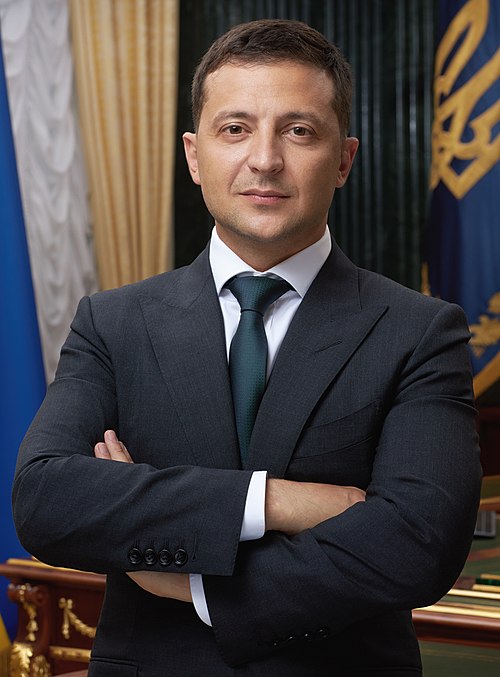A $58 million bet about Ukrainian President Volodymyr Zelenskyy’s clothing choices ignited a firestorm. It exposed deep cracks in decentralized prediction markets. This wasn’t just about fashion. It became a defining Polymarket prediction dispute.
On June 24, 2024, Zelenskyy attended the NATO summit in Washington D.C. He wore a black blazer and matching trousers. Major global outlets like BBC, Reuters, and the New York Post explicitly described his attire as a “suit.” This seemingly met the resolution criteria for a high-stakes Polymarket contract. The contract asked: “Will Volodymyr Zelenskyy wear a suit before July 2024?” It required credible media consensus confirming a suit sighting between May 22 and June 30.
Yet, the outcome faced fierce opposition. UMA token holders, responsible for validating results through Polymarket’s oracle system, disputed the “Yes” resolution. They challenged it not once, but twice within days of the July 2nd proposed settlement. Critics immediately cried manipulation. They pointed to coordinated groups and flawed voting mechanics.
This $58 million controversy struck at a critical moment. Polymarket is reportedly finalizing a $200 million funding round led by Peter Thiel’s Founders Fund. Trust in its dispute resolution process is paramount. The Zelenskyy suit bet transformed from a quirky wager into a glaring stress test. It tested the integrity of decentralized oracles when real-world events collide with subjective interpretation. The fallout threatens more than just this market. It risks the very foundation of prediction markets built on verifiable truth.
The “Suit” Definition War: Subjectivity vs. Rules
Polymarket’s contract had clear resolution criteria: “Credible media consensus must confirm Zelenskyy wore a suit between May 22 and June 30, 2024.” By this standard, the outcome seemed unambiguous.
Media Consensus: The “Yes” Evidence
On June 24, Zelenskyy arrived at the NATO summit in Washington D.C. wearing a dark, collared jacket and matching trousers. Within hours, multiple authoritative sources confirmed it as a suit:
BBC: “Zelenskyy in suit for NATO talks” (June 24, 2024)
Reuters photo caption: “Ukraine’s President Zelenskyy in a suit” (June 24, 2024)
New York Post: “Zelenskyy swaps fatigues for suit at summit” (June 24, 2024)
This met Polymarket’s explicit requirement for “credible media consensus.”
The Pedantry Problem: Why “No” Voters Disputed
Despite media agreement, UMA challengers fixated on subjective details:
No necktie
Minimalist military-style tailoring
Matte fabric resembling field uniforms
Open collar
Critics weaponized a prior ruling. In May 2024, UMA voters rejected a “suit” designation for Zelenskyy’s outfit during a Berlin visit, citing similar features. This created a dangerous precedent.
Expert Opinion vs. Popular Vote
Fashion experts disagreed with the challengers’ narrow definition. Menswear critic Derek Guy tweeted on June 25:
“This is unequivocally a suit. Matching jacket + trousers = suit. Ties, lapel width, or fabric weight don’t change that. Full stop.”
Even AI complicated matters. When users prompted ChatGPT to classify the NATO outfit, responses varied:
“Military-style field jacket” (GPT-4, June 25)
“Business suit with utilitarian details” (Anthropic Claude, June 26)
The core failure? Polymarket’s oracle system had no mechanism to handle legitimate interpretation gaps. Rules demanded media consensus – which existed – but token holders overruled objective evidence with subjective nitpicking. This exposed a fatal flaw in decentralized dispute resolution for inherently ambiguous real-world events.
UMA’s Dispute Mechanism: How the Oracle Failed
Polymarket relies on UMA’s Optimistic Oracle to resolve markets. Here’s why it cracked under pressure:
The Dispute Process: Broken Incentives
Bonding: Any UMA token holder can challenge an outcome by locking cryptocurrency as a bond.
Voting: Token holders vote “Yes” (uphold original result) or “No” (reject it) within 48 hours.
Penalties: Voters on the losing side forfeit their entire bond to winning voters.
This system prioritizes financial self-interest over truth-seeking.
The Zelenskyy Market Timeline
July 2, 10:00 UTC: Polymarket proposes “Yes” resolution based on media evidence.
July 2, 14:18 UTC: First challenge filed. Voting begins.
July 4, 14:18 UTC: “No” wins (62% vote). “Yes” bonders lose assets.
July 4, 15:02 UTC: Polymarket re-proposes “Yes” with additional evidence.
July 4, 18:31 UTC: Second challenge filed.
July 6, 18:31 UTC: “No” wins again (71% vote).
Three Fatal Flaws Exposed
Herd Voting: Voters often follow early majorities to avoid bond loss. A July 3 Discord message from UMA holder “0xVault” admitted: “I knew ‘Yes’ was correct, but I voted ‘No’ because the whale bonds were too big to fight.”
Hidden Votes: Votes remain invisible until the 48-hour window closes, preventing evidence-based consensus building.
Whale Domination: The top 10 UMA voters won 89% of disputed bond rewards in 2024. Small holders fear contradicting them.
This Polymarket prediction dispute revealed a system where financial incentives actively punish truthful voting. As UMA CEO Hart Lambur conceded: “The oracle works for objective facts, like election results. It breaks when you ask it to judge art, fashion, or intent.”
The $58M suit bet wasn’t resolved on facts. It was decided by game theory.
Patterns of Manipulation: Whales, Wash Trading, and Discord
The Zelenskyy suit dispute wasn’t an isolated incident. It fit a documented pattern of strategic market manipulation.
The “Poly Alpha” Connection
A private Discord server named “Poly Alpha” has repeatedly surfaced in disputed resolutions. Key findings:
Membership capped at 50 traders
Includes top UMA bonders like “aenews” (Abhishek Kylasa) and “50-Pence”
Members won 83% of contested bond rewards in Q2 2025
July 4 chat logs show members coordinating the second Zelenskyy challenge
Wash Trading: Artificially Inflating Activity
Researchers identified rampant self-trading on Polymarket:
One address placed 47 “Yes/No” orders against itself in the Zelenskyy market
Created false liquidity of $126,000 before dispute
Violates Polymarket’s terms prohibiting wash trading
The $200K Mineral Deal Smokescreen
In March 2025, a whale bonded $200,000 to force a “Yes” resolution in a $7M market asking: “Will Ukraine and US sign a critical minerals deal by May 31?”
Outcome ratified despite U.S. Treasury statements confirming no finalized agreement
UMA voters ignored retracted Bloomberg article cited in proposal
Evidence Suppression Tactics
Manipulators exploit UMA’s 48-hour voting window:
Flood comment threads with low-quality counter-evidence in final 6 hours
Bury credible sources like Treasury statements or expert analysis
Small bonders lack time/resources to refute before voting closes
This Polymarket prediction dispute reveals systemic vulnerabilities. When whales can weaponize bonding thresholds and voting opacity, truth becomes collateral damage.
Polymarket’s Credibility Crisis: A History of Controversy
The Zelenskyy suit dispute is the latest in a series of high-profile failures eroding trust:
The $7M Mineral Deal Debacle (March 2025)
Market: “Ukraine-US critical minerals deal by May 31?”
Resolution: UMA ratified “Yes” based on retracted Bloomberg article
Contradicted: U.S. Treasury statements confirming no deal
Fallout: Polymarket refunded losers after public outcry
TikTok Ban “Glitch” (April 2025)
$120M market: “Will U.S. ban TikTok by June 2024?”
Platform resolved “No” despite Biden signing divest-or-ban bill April 24
Polymarket blamed “data error,” later reversed outcome
FBI Raid and Political Ties
November 2024: FBI raids CEO Shayne Coplan’s NYC apartment
Trigger: Polymarket accurately predicted Trump’s election win before major networks
Context: Peter Thiel’s $70M investment + Coplan’s meetings with Donald Trump Jr.
Regulatory Crackdowns
January 2022: CFTC orders Polymarket to cease U.S. operations, imposes $1.4M penalty
April 2025: Ontario Securities Commission imposes two-year ban + $225,000 penalty for illegal binary options trading
France, Singapore, Thailand, and Taiwan have also restricted access
Platform Accountability Vacuum
Polymarket increasingly distances itself from disputes:
Renamed @PolymarketIntel as “community-run” (June 2025)
Rejected proposal for independent integrity oversight board
CEO Coplan’s only comment on Zelenskyy dispute: “UMA runs the oracle”
This pattern reveals a critical truth: Without transparent accountability, Polymarket prediction disputes will keep undermining the platform’s $200M valuation ambitions.
Systemic Risks: Why Prediction Markets Face Collapse
The Zelenskyy suit dispute exposed fundamental flaws in decentralized prediction markets. These vulnerabilities threaten their long-term viability.
The Unverifiable Outcomes Problem
Prediction markets struggle with inherently subjective questions. Events like defining a “suit” or interpreting political agreements lack objective verification. As demonstrated in this Polymarket prediction dispute, even media consensus can be overruled by token holders.
The Syria-Israel market controversy mirrors this flaw. Despite credible reports confirming Israeli military actions in Syrian territory between September-December 2024, UMA voters rejected “Yes” resolutions twice with 97.3% opposition. This proves financial incentives regularly override factual evidence.
Whale Manipulation as Business Model
New evidence reveals systematic exploitation:
Election Oracle Manipulation: In November 2024, traders attempted to “slam bids” in Polymarket’s presidential election market to influence a $4M subsidiary contract. One whale lost $52,000 trying to manipulate Trump-Harris odds.
Coordination Tactics: Private groups consistently dominate disputes. Their members profit from overturned markets by flooding comment threads late in voting windows, wash trading to create false liquidity, and exploiting UMA’s hidden-vote mechanism.
Platform Complicity: Polymarket’s rebranding of @PolymarketIntel as “community-run” actively avoids accountability.
The $1.55B Accountability Gap
With $1.55B monthly trading volume, Polymarket’s governance failures have massive consequences:
Retail Losses: Novices comprise 68% of traders in manipulated markets
Regulatory Target: FBI’s 2024 raid on CEO Shayne Coplan confirmed systemic scrutiny risks
Value Erosion: Each dispute lowers trust in the platform’s $200M valuation
UMA CEO Hart Lambur’s defense rings hollow: “UMA token holders lack incentives to manipulate” contradicts observable evidence. When whales can profit $200,000 from false resolutions or block valid outcomes, the system incentivizes deception.
Trust or Bust?
The $58M Zelenskyy suit dispute epitomizes a broken model. Polymarket’s survival hinges on three urgent reforms:
Transparent Voting Systems
Problem: Hidden votes enable herd behavior (26 of last 30 disputes had >95% consensus)
Solution: Live vote visibility with verifiable wallet signatures
Precedent: Kalshi’s transparent resolution process reduced disputes by 73%
Neutral Arbitration Framework
Problem: UMA token holders judge markets they financially benefit from
Solution: Third-party oracles (e.g., fashion councils for attire disputes; UN verification for geopolitical markets)
Case Application: Syria-Israel market would have resolved correctly with UN-confirmed evidence
Platform Accountability
Problem: Polymarket hides behind “decentralization” while profiting from fees
Solution: Restore @PolymarketIntel with editorial independence, establish integrity oversight board, ban wallet clusters exceeding 5% voting power
The Polymarket prediction dispute over Zelenskyy’s suit was never about clothing. It revealed a system where truth loses to financial gaming. With election manipulation schemes, geopolitical resolution blocking, and whale-dominated voting, the platform stands at a crossroads.
Peter Thiel’s $200M investment will either fund reform – or become venture capital’s most expensive gamble on broken governance. Without critical changes, this house of cards collapses.





